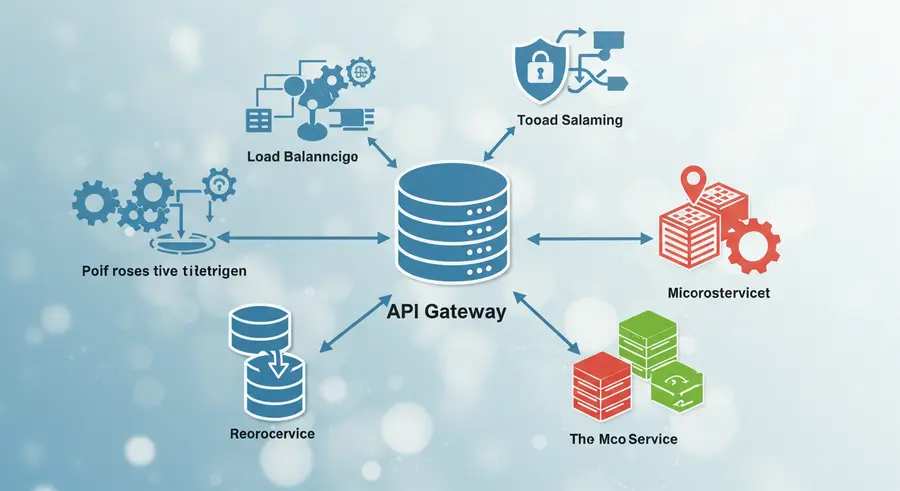The Pivotal Role of an API Gateway in Microservices Architecture
In the intricate landscape of microservices, managing communication, security, and routing across numerous independently deployed services can quickly become a complex endeavor. This is where an API Gateway emerges as a critical component, acting as a single entry point for all client requests and orchestrating interactions with backend microservices.

What is an API Gateway?
An API Gateway is essentially a server that sits between the client applications and the backend microservices. It intercepts all incoming requests, routes them to the appropriate service, and then aggregates the responses before sending them back to the client. Think of it as a sophisticated traffic controller, ensuring smooth and secure flow of information within your distributed system.
Key Functions and Benefits
The responsibilities of an API Gateway extend far beyond simple request routing. Its multifaceted capabilities offer significant advantages for microservices architectures:
- Request Routing: Directs incoming requests to the correct microservice based on the URL, headers, or other criteria.
- Load Balancing: Distributes incoming traffic across multiple instances of a service to prevent overload and ensure high availability.
- Authentication and Authorization: Centralizes security concerns by authenticating user requests and authorizing access to specific services, reducing the need for each microservice to handle these aspects individually.
- Rate Limiting: Protects backend services from abuse or excessive requests by limiting the number of calls a client can make within a certain timeframe.
- Caching: Stores frequently accessed data to reduce latency and lighten the load on backend services.
- API Composition and Aggregation: Combines responses from multiple microservices into a single, cohesive response for the client, simplifying client-side development.
- Protocol Translation: Enables different communication protocols between clients and microservices (e.g., REST to gRPC).
- Monitoring and Logging: Provides a central point for collecting metrics and logs related to API usage and service performance, offering valuable market insights for operational intelligence.
Challenges and Considerations
While highly beneficial, implementing an API Gateway also comes with its own set of challenges. It can introduce a single point of failure if not properly designed for high availability. Increased network latency due to an additional hop in the request path is another consideration. Furthermore, the API Gateway itself needs to be scalable and resilient. Careful planning and robust implementation are crucial to mitigate these potential drawbacks.
Popular API Gateway Solutions
The market offers a variety of API Gateway solutions, both open-source and commercial, each with its unique strengths:
- Nginx: A powerful open-source web server that can be configured as a highly performant API Gateway.
- Kong: An open-source API Gateway and API management platform known for its extensibility and plugin ecosystem.
- Envoy Proxy: A high-performance, open-source edge and service proxy designed for cloud-native applications.
- Amazon API Gateway: A fully managed service on AWS that allows developers to create, publish, maintain, monitor, and secure APIs at any scale.
- Google Cloud Endpoints: A distributed API management system that provides a proxy to your API and offers features like authentication, monitoring, and logging.
Conclusion
An API Gateway is an indispensable component in a well-designed microservices architecture. It simplifies client-service interactions, enhances security, improves performance, and provides a centralized point for managing the entire API landscape. By offloading cross-cutting concerns from individual microservices, it allows developers to focus on core business logic, ultimately accelerating development and improving the maintainability of complex distributed systems. Embracing an API Gateway is a strategic move towards building more robust, scalable, and manageable microservices applications.